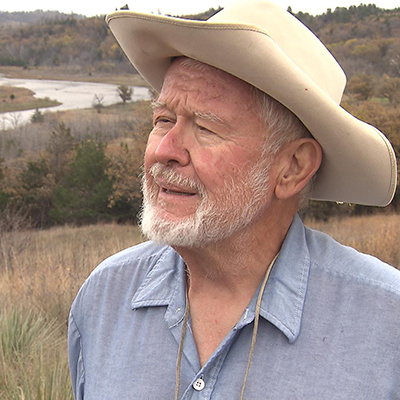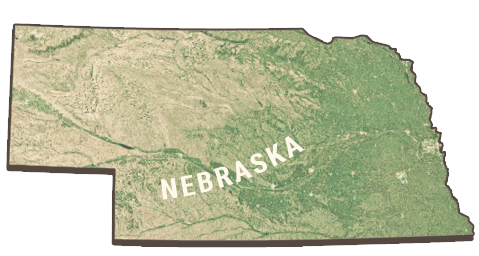
Mike Voorhies has long appreciated the importance of context in understanding fossil evidence. His own context includes his Nebraska boyhood as well as his studies under paleo sleuth Morris Skinner and his lifelong work at the University of Nebraska-Lincoln.
Mike Voorhies has said, “How do you read the book of time if you don’t know what page you’re on?”
In his career as a paleontologist, Voorhies has written countless pages for scientists as well as for the public to further the understanding of the science of paleontology, its Nebraska resources, and its value to humanity.
Voorhies was born just ten miles from Ashfall. In 1971, on a stroll with his wife, Jane, on the farm of Melvin Colson, he made a life-changing discovery in a gully at the edge of a cornfield. During their walk, something caught his eye—what turned out to be the lower jaw of a young rhinoceros. Within minutes, Voorhies uncovered the rhino's skull...then its neck... then a glimpse of a front foot. It was all part of a complete skeleton buried in volcanic ash.
Following up the clues left by the unfortunate rhino enabled Voorhies to discover Ashfall Fossil Beds. Voorhies and colleagues excavated the site without removing the fossils, so that visitors could view the fossils in the positions they were found and to preserve contextual data for future research.
Voorhies was uniquely suited to recognize the potential of Ashfall. Throughout his career, he studied faunas as well as taphonomy.
This approach enables a paleontologist to interpret the history of a site. It provides a context for understanding the usefulness of fossils found at a particular site for interpreting different aspects of ancient ecosystems, such as species diversity and types of ancient habitats that were present.
Mike Voorhies has detected and collected herds of fossil remains of all descriptions, including an entire ecosystem destroyed by a cloud of volcanic ash.

Voorhies was mentored by Morris Skinner, and followed in Skinner's footsteps by producing a very important synthesis of the fossil sites along the Niobrara River entitled “Vertebrate Paleontology of the Proposed Norden Reservoir Area, Nebraska”, based upon his life's work in the area.
His many fossil studies include skulls of mammoths locked together in battle (from the Fort Robinson area), as well as bones of a three-toed horse with her foal sheltered between her legs.
Like many paleontologists, Voorhies's contributions to paleontology are not limited to insights about one particular kind of animal. For example, the dissertation he wrote for his doctoral degree became a highly valued reference work for others carrying out taphonomy studies.
Norden Report PDF
Here are just a few of the samples Voorhies collected. Use the 3D models to see what he saw:
Paleo sleuths such as Mike Voorhies use many clues to figure out the timing and severity of past climate changes. For example, cold-blooded animals that are very sensitive to temperature variations are what he calls “paleo-thermometers.” Giant land turtles fall into this group. Like modern tortoises, these creatures needed warm temperatures to survive. Freezing or near-freezing weather would have been deadly. Tortoise shells are often found among Nebraska rocks of the Eocene to Miocene (37 to 5 million years ago). This continuous fossil record tells paleo sleuths that giant land turtles were thriving, and although temperatures were cooling for much of the Miocene, Nebraska must have been frost-free until the late Pliocene when land tortoises suddenly disappear from Nebraska's fossil record.
Alligator fossils tell a tale of rain as well as warmth. Paleo sleuths deduce that Nebraska was not only warm millions of years ago but also had plenty of rain to provide the permanent water areas alligators needed to prosper. But the ancient alligators were outlived by the giant turtle population. Gators disappeared 9 million years ago because even though temperatures had not yet plunged into the Ice Age, precipitation had diminished and the area was too dry to support alligator life.